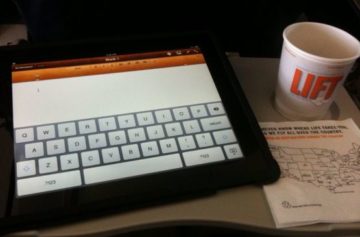Back when Barnes & Noble released the Nook Color, the company created a new category of Android tablet: a low-cost, paired down device with a focus on a certain kind of user. They called it a “Reader’s Tablet” and made clear that they weren’t trying to compete with the Apples and Samsungs of the world. Other companies followed suit, starting with Amazon. And now you can find not-so paired down tablets at the same low price. That begs the question: why would anyone buy a Nook when the Nexus 7 has more features?
The answer lies in the audience. B&N continues to make tablets for people who love to read, and the Nook HD is a great example of that. Coming in at $200 for the 8GB version and $230 for the 16GB, the HD has plenty going for it: a higher resolution display than the competition, an attractive, easy-to-use interface, an exceptional reading experience, and now more multimedia content. But even with all that, is it a more compelling tablet than what Google offers?
Look and Feel
Barnes & Noble dropped the distinctive design seen on the Nook Tablet and Nook Color and started from scratch for the Nook HD. The result is a lighter, more holdable tablet. The soft-touch back has a grip-friendly contour just like the Nook Simple Touch e-reader, so it’s more comfortable in the hand and not likely to slip. The raised power button and volume toggle are easy to find by touch and in the same position as on the Nook Tablet. The stylized n button remains in place just below the screen.
The plastic bezel around the 7-inch display is wider than it needs to be so that users have a place to rest their thumb that isn’t the screen. Though it means the tablet is a little wider than absolutely necessary, it’s a good choice considering what most people will do with the HD: read books and magazines.
Still missing is a front or rear-facing camera. Though the ability to video chat would be nice, this feature isn’t a priority for everyone.
B&N replaced the Micro USB port from previous tablets with a proprietary 30-pin port for connection and charging. We understand their reasoning for this – you can now output to an HDTV with a special adapter, among other things – but still don’t like that the connecting cord is proprietary instead of universal. Lose it, and you must buy another.
Reading Experience
Barnes & Noble has always prioritized reading with its tablets, and that means a great display. The 7-inch IPS screen offers wide viewing angles, some sunlight readability, and an HD resolution of 1440 x 900 pixels. This is one of the highest – if not the highest – resolutions available on a 7-inch Android tablet. Sometimes, a super high resolution on a small screen means tiny buttons and hard to read text, but not here. The reading experience is excellent and the fonts are crisp. Full-color magazine and comic book pages are gorgeous.
Though reading on a tablet isn’t as comfortable as on an E Ink e-reader, the Nook makes the experience as comfortable as possible in this format. Inside e-books, the Nook HD gives readers control over how things look for maximum comfort: eight text sizes and six fonts, line spacing and margin control, plus themes that change background and text color. As usual, turning pages only requires a tap at the edges or a swipe. When using the Nook one-handed, we were able to turn pages with our left hand by swiping with the thumb. You won’t need to reach all the way across the screen to accomplish this.
Kids e-books are on a whole other level. We like that they look almost like their print counterparts but with digital enhancements that keep kids engaged and improve reading skills.
As nice as the e-book experience is, one of the major reasons to go with a tablet over a dedicated e-reader is for the full-color, full layout digital magazines and comic books. Readers can either read a magazine in full layout mode or switch to ArticleView, which shows a plain text version with all the same text options as eBooks. Since the display is so crisp and pixel dense, you may not need ArticleView, even when fonts are small, since they remain crisp and readable.
This is also true for comics. For those who can’t read small text, no matter how crisp, the comic book engine offers ZoomView, which zooms in on frames and enlarges the text. It’s not as intuitive as comiXology’s similar engine, but still works really well.
Catalogs and Scrapbooks
Barnes & Noble added digital catalogs to their offerings with the launch of the HD and the interface here is similar to magazines. Catalog pages have an additional feature: direct shopping links. Tap on a product you like to get more information and tap once more to go right to the website where you can buy it…
Read More: digitaltrends.com
